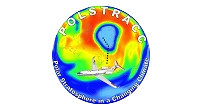Scientific objectives: Difference between revisions
From Polstracc
Content deleted Content added
No edit summary |
No edit summary |
||
| Line 1: | Line 1: | ||
| ⚫ | |||
| ⚫ | |||
Aiming on improving our understanding of the role of the Arctic stratosphere in the atmospheric system and improving future projections of the development of the ozone layer, the key objectives of POLSTRACC are: |
Aiming on improving our understanding of the role of the Arctic stratosphere in the atmospheric system and improving future projections of the development of the ozone layer, the key objectives of POLSTRACC are: |
||
* Investigating the structure, dynamics and chemical composition of the UTLS at high latitudes with a special focus on the Lowermost Stratosphere (LMS). Studies on the outflow of the polar vortex and its influence on the composition of the LMS at high and middle latitudes |
* Investigating the structure, dynamics and chemical composition of the UTLS at high latitudes with a special focus on the Lowermost Stratosphere (LMS). Studies on the outflow of the polar vortex and its influence on the composition of the LMS at high and middle latitudes |
||
| Line 5: | Line 7: | ||
* Investigating Arctic cirrus clouds, their influence on the radiative forcing and their potential for denitrification, dehydration and chlorine activation |
* Investigating Arctic cirrus clouds, their influence on the radiative forcing and their potential for denitrification, dehydration and chlorine activation |
||
<br/> |
<br/> |
||
| ⚫ | |||
| ⚫ | |||
[[Category:One]] |
[[Category:One]] |
||
Revision as of 22:19, 8 October 2014

Aiming on improving our understanding of the role of the Arctic stratosphere in the atmospheric system and improving future projections of the development of the ozone layer, the key objectives of POLSTRACC are:
- Investigating the structure, dynamics and chemical composition of the UTLS at high latitudes with a special focus on the Lowermost Stratosphere (LMS). Studies on the outflow of the polar vortex and its influence on the composition of the LMS at high and middle latitudes
- Improving the understanding of catalytic processes involved in polar ozone loss with a focus on chlorine and bromine chemistry in the LMS
- Improving the knowledge on polar stratospheric cloud (PSC) composition, de-/nitrification by sedimentation of nitric acid-containing particles and the role of gravity waves or orographic waves on PSC occurrence
- Investigating Arctic cirrus clouds, their influence on the radiative forcing and their potential for denitrification, dehydration and chlorine activation
